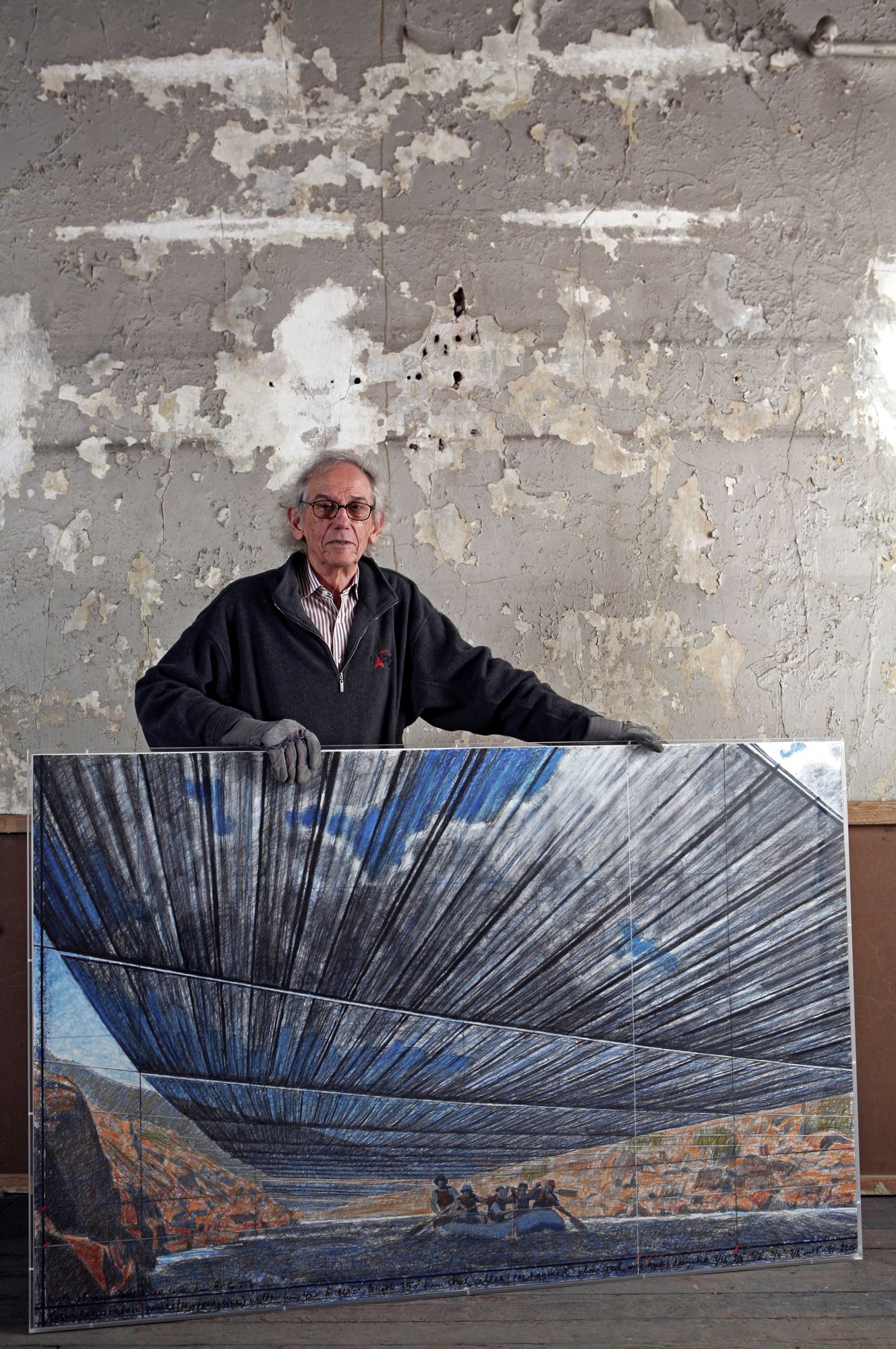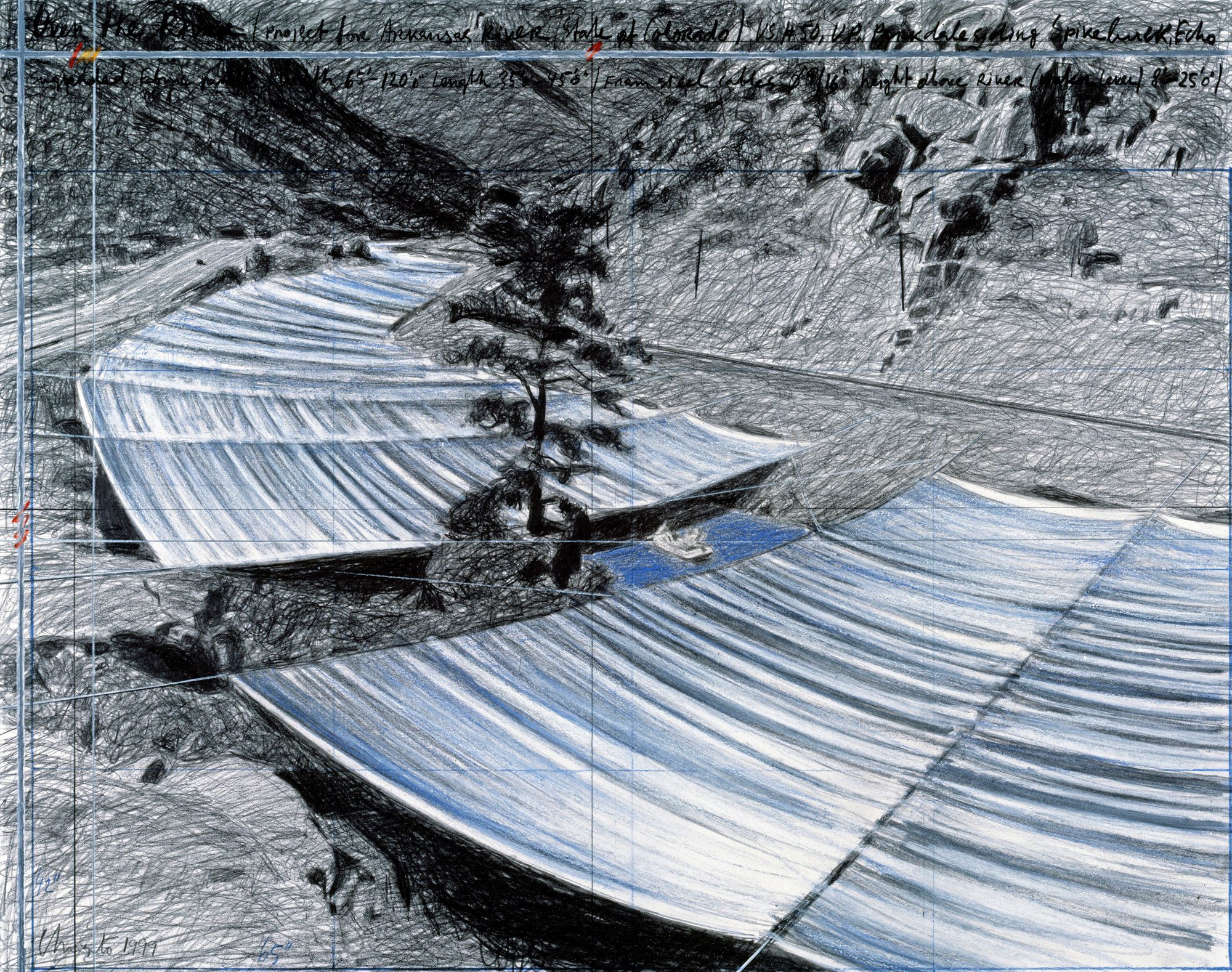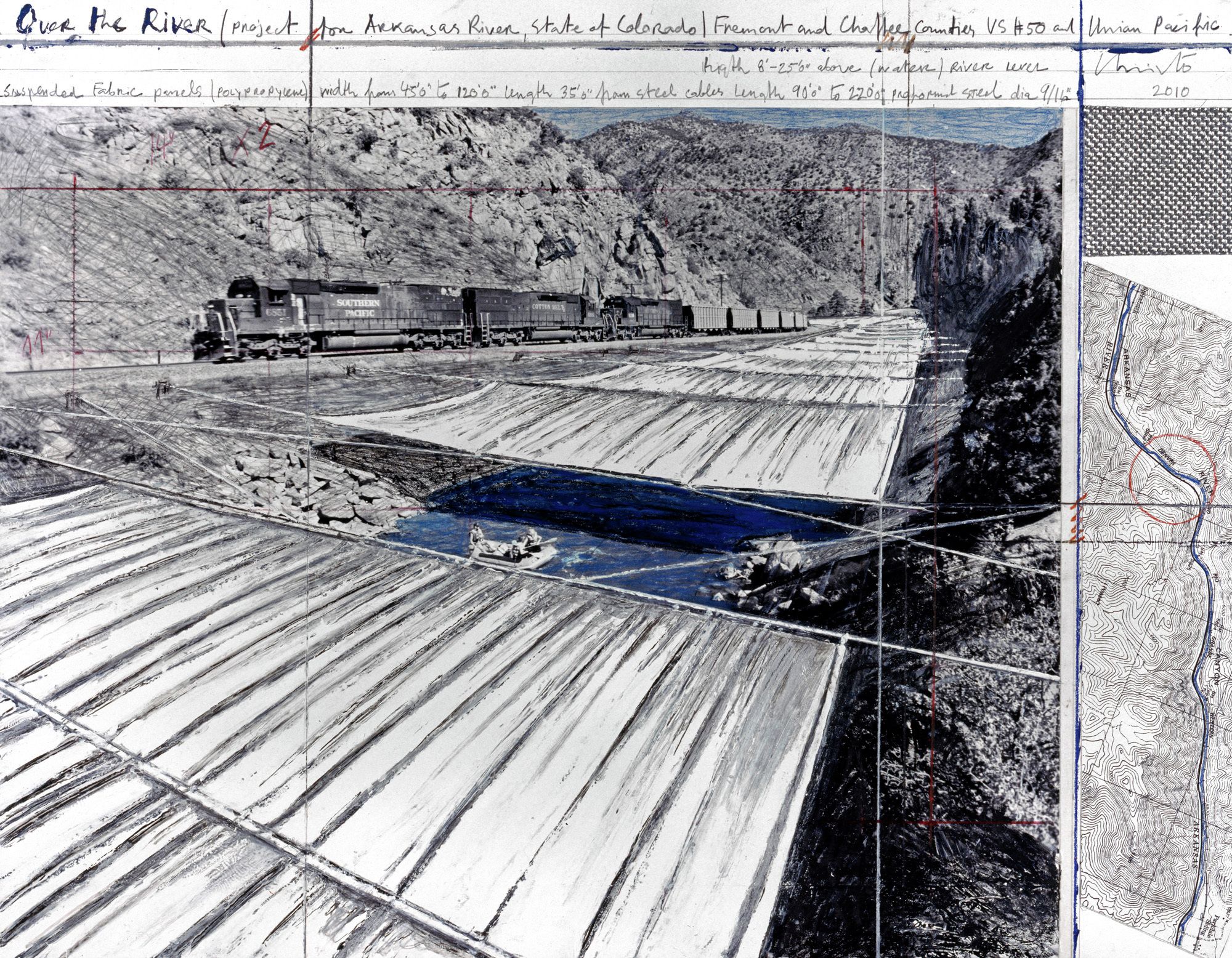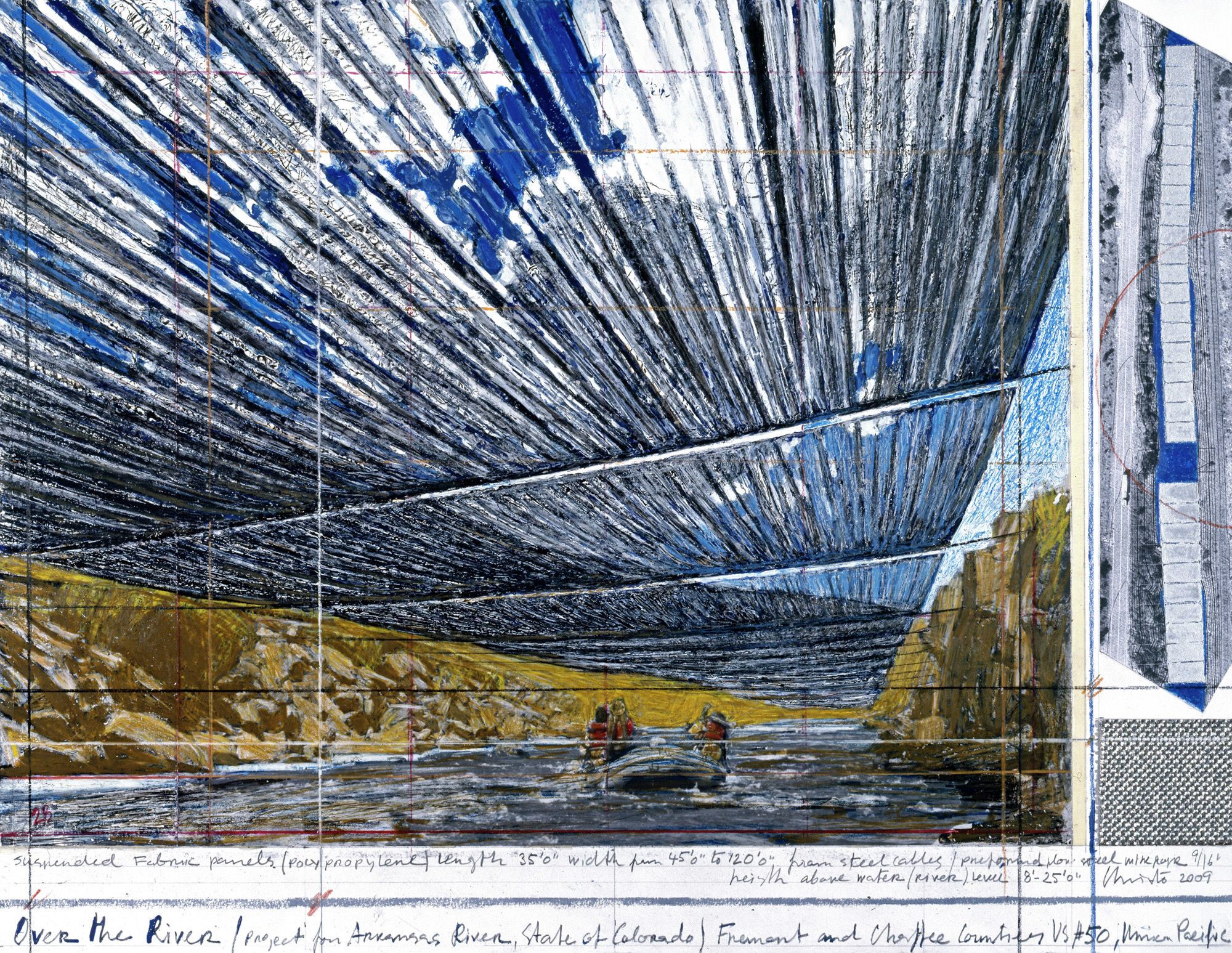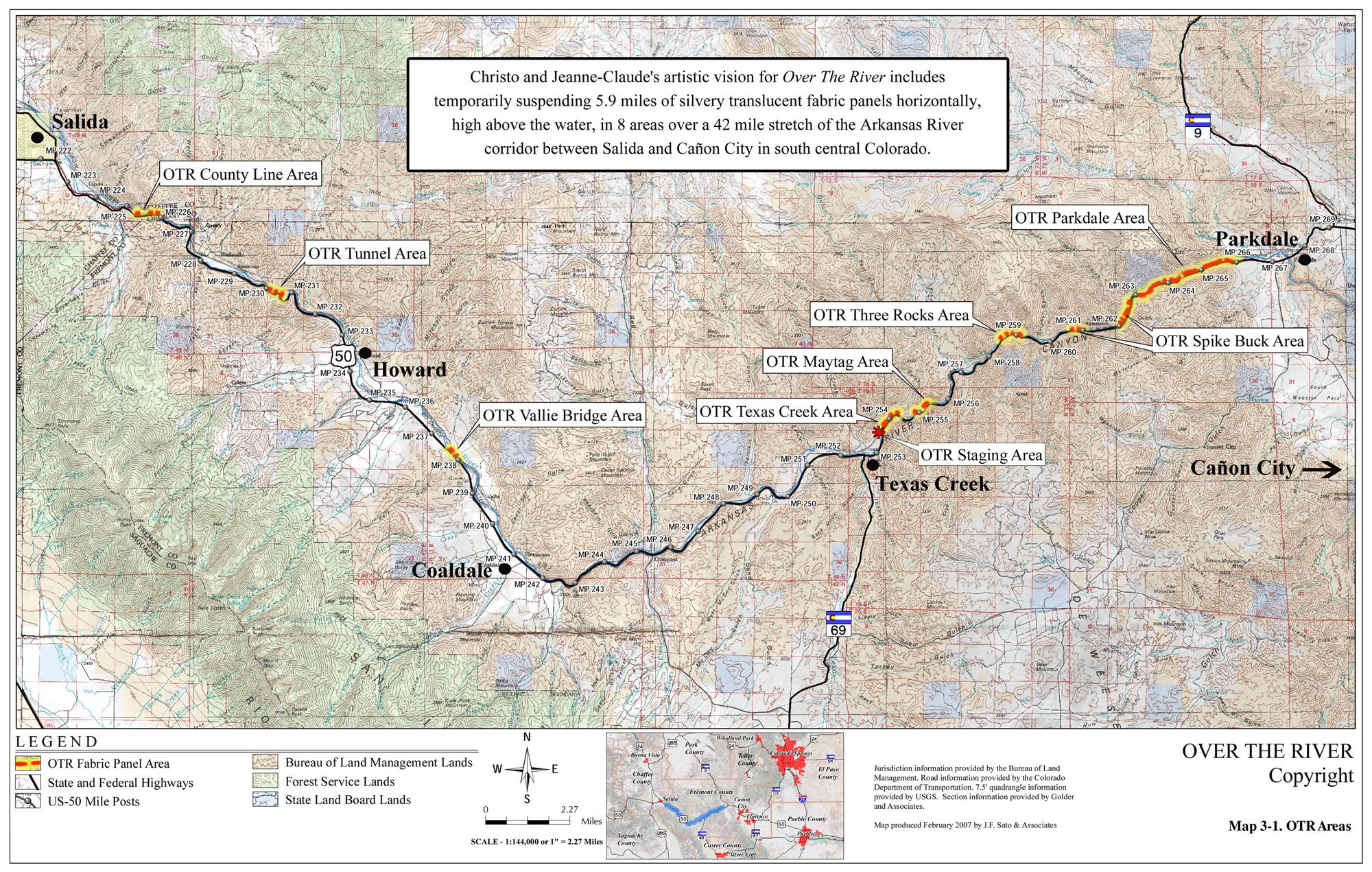Monumental Installation over the Arkansas River
Known for their controversial outdoor art installations, Christo and Jeanne-Claude were an artistic power duo. This husband-wife team made massive, site-specific installations like ‘The Gates’ in Central Park, ‘Wrapped Coast’ in Australia, and ‘The Umbrellas’ in Japan. After a lengthy legal battle, Christo and Jeanne-Claude finally received the approval to create its monumental installation over the Arkansas River called ‘Over the River’. This project was initially conceived in early 1992 with his late wife and partner Jeanne-Claude.
This work consists in scale and monumentality as the duo’s long celebrated creative endeavors, comprise 5.9 miles (9.5 kilometers) of a silvery, luminous fabric suspended high above the water in eight distinct areas along a 42-mile (67.6 kilometers) stretch of the Arkansas River in Colorado. This continuous stream of successive fabric panels will only be temporarily interrupted by bridges, rocks, trees, and bushes, and for aesthetic and technical considerations. Steel wire cables, anchored on the upper part of the riverbanks, will cross the river to attach the fabric panels, which will follow the configuration and width of the changing course of the river. This self-funded project has been a heated topic among the Colorado residents, with many of them concerned that the installation will disrupt the pristine landscape and cause dangerous traffic within the winding canyon. This concern was carefully examined, as the Board of Commissioners and County staff solicited extensive public comment and considered the Bureau of Land Management’s widespread analysis of the project, as well as the nearly 200 mitigation measures addressing community and environmental concerns, in hopes that all actions will be taken to reduce any risk of the project. Additionally, over the River is projected to significantly increase international tourism in the area and is expected to generate $583,000 in additional sales tax revenues within the Fremont and Chaffee Counties alone.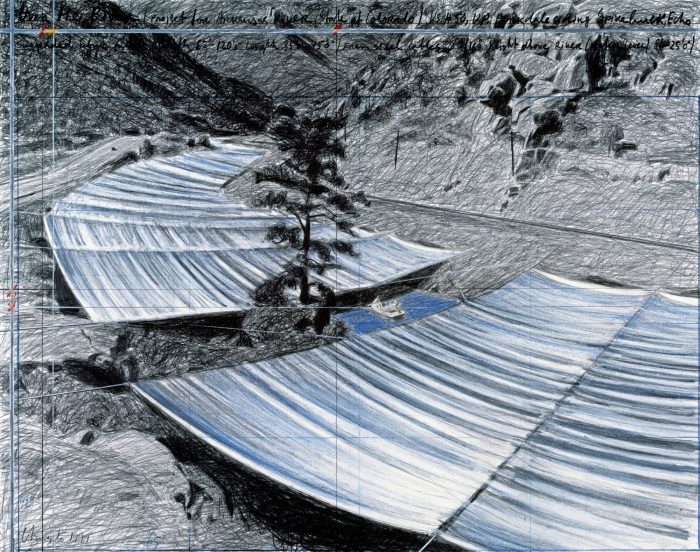
By : Delia Chang
